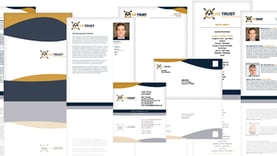Although the general trend in product popularity has stayed the same with little change in the market share for Indexed Universal Life, Whole Life, Guaranteed Universal Life, and Term, there are certain aspects of the life insurance space that are changing dramatically.

Accelerated underwriting, electronic applications and policy delivery all contribute to a faster, smoother customer experience. Indexed Universal Life (IUL) products are expanding in an effort to illustrate higher cash values and income.
The IUL space is split into accumulation products used mostly for retirement income and protection products with dialable death benefit guarantees that provide more flexibility and potentially lower cost than a Guaranteed Universal Life (GUL) product.
The battle of the illustrated rate
The big change is the battle to illustrate the highest payout rate in the accumulation IUL arena. The carriers are in two camps. One is offering traditional AG 49 rates and modest multipliers. The other is buying up rates and multipliers with substantial policy fees. Actuarial Guideline 49 was implemented in 2017 to curtail excessively high interest projections on IUL illustrations. It generally limited the illustrated rate to a percentage of the of the cap rate. For example, a product with a current cap of 9% would have a maximum illustrated rate of 5.63%. Most caps today are in the 5% to 6% range.
This new kid on the block is the ‘multiplier’, which provides an additional interest credit either immediately or at a designated policy anniversary in the future, in year 6 or 10. Say the product has a 50% multiplier, if the index strategy credits 6% the policy would a receive 9% credit overall for that year. According to a recent Wink Report there are products crediting up to 13.79% on illustrations. It is apparent that a product illustrated at a 13.79% rate will show much more cash value and potential income than a product illustrated at the max AG 49 rate. As we will see in a moment there is never a free lunch where interest earnings and option budgets are concerned. It could be a mistake to just accept the illustration with the highest illustrated cash value. You may want to take a second look.
Understanding the impact of a multiplier
The important takeaway for financial professionals working to meet client needs within the client’s risk tolerance is that products that have higher multipliers typically have substantially higher expenses. It's also important to understand what the multiplier is and whether it is guaranteed or can change at the whim of the carrier or due to policy performance. Lastly, the financial professional must be able to articulate this feature to the client in an understandable way.
Producers should be careful when dealing with illustrations using high multipliers because these products will often respond differently in years when the strategy chosen credits zero. Instead of the cash value staying the same, a product with a 7% fee drag to offer a high multiplier, would lose 7% of its cash value. So, zero would no longer be your hero.
This chart illustrates the impact of less than perfect performance on IUL contracts with different levels of internal fees and high multipliers. As can be seen, fees have a significant impact even when there is only one zero in the first ten years.
This chart illustrates the impact of performance on retirement income for high multiplier products
|
|
7% Charge |
6% Charge |
1.98% Charge |
|
Steady State Return |
$176,086 |
$180,846 |
$184,123 |
|
One Zero in Year 6 |
$150,145 |
$143,051 |
$166,594 |
|
Two Zeros in Years 6,11 |
$129,288 |
$117,166 |
$151,627 |
|
Cyclical Zeros in years 2,7,12,17,22,27 |
$56,897 |
$60,710 |
$113,930 |
Source: Winflex Illustrations dated 7/25/2019, John Hancock Webinar: LIFE-9593WEB2 MLINY071719046
Important to note…
This analysis is not all inclusive and fees vary among carriers. It is important note that in the current environment, illustrating the highest possible retirement payout may create more risk that the policy will not perform as illustrated in less than favorable market conditions. The takeaway here is that clients must be informed of the added risk associated with higher fees, and multipliers that can vary over time. At first glance, these illustrations look appealing, but could warrant a second look.





